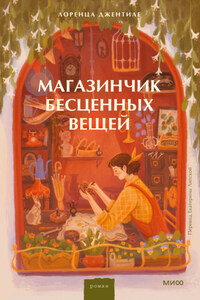ONE RAINY NIGHT not long ago, a curious report appeared in the late edition of our city's evening newspaper. Under the headline ‘MONKEY PROFESSOR DIES’, it was the obituary notice for an academic, one Dr Alphonsus Rotz. The article went like this:
DR ALPHONSUS ROTZ, who has died at the age of 60, was one of the most original zoologists of recent years. He will be best remembered for his fieldwork with primates.
After taking a degree in zoology, followed by a Ph.D. on ‘Posterior Pigmentation in the Mandrill’, Alphonsus Rotz was appointed Extraordinary Research Fellow at the National University, allowing him a generous stipend that provided the basis for a series of audacious research projects.
Probably the most famous of these projects was his 19-year period of unorthodox and, at times, controversial field research on the silver-maned baboons of the Ethiopian savannah. He went there with a party of graduate students, which he was supervising on a summer project. At the end of the summer his students returned home, but Rotz decided to stay. Left alone, he extended the theory of total immersion fieldwork, already practised widely by forward-thinking anthropologists. He became part of the baboon colony, living in a cave in the rocks, sharing their diet of roots and insects and taking part in their courtship rituals. Years later, Dr Rotz recalled in an interview how he had gained the creatures' trust so completely that baboon mothers would give him their offspring to suckle when they went out hunting.
But Dr Rotz's uncompromising approach to field-work had its drawbacks. Cut off as he was, the project leaders heard from him less and less frequently, and eventually Rotz lost all contact with the academic establishment. Assuming he was dead, the university stopped paying his stipend.
However, Dr Rotz was not dead, and he had even been contributing sporadically to a journal published in Addis Ababa. The back numbers of this publication give an idea of the work he was engaged in among the baboons. At first he was interested in routine questions, such as the animals' diet and etiquette, and the significance of the baboon in local folklore. Later articles contained outlines for a theory on the origin of language, and a detailed study of baboon vocal cords.
After nineteen years Dr Rotz left the savannah abruptly and returned home, to the astonishment and delight of his colleagues. He was unkempt and incoherent, and he brought with him only a small package containing his journals and a few mementos – a lock of pungent-smelling hair and a greasy photograph of a baboon baring its teeth. It was never fully explained why he had chosen, after all this time, to break off his research and come home. All Dr Rotz would say was that he had left for ‘personal reasons’.
Only at this point in the article did Dr Rotz's – admittedly tenuous – connection with our city become clear. When he returned from Africa, his former colleagues were naturally pleased to see that he was still alive, but having once stopped his stipend the university authorities were reluctant to start paying it again, and so Dr Rotz left to take up the position of visiting professor of zoology at the Central University of our city. The obituary continued:
DURING THIS TIME he published a series of papers which synthesized his findings and his theories from his work among the baboons. One of these papers gained particular notoriety in academic circles. In it he described how he had run a kind of hedge school for baboons with the purpose of identifying the most intelligent animals at an early age. He had worked with one unusually gifted female over a period of several years and eventually succeeded – so he claimed – in teaching the animal to speak. The appendix to this paper contained a lyrical account, quite unsuitable for an academic essay, of their long discussions of German Romantic poetry, sitting on a rocky outcrop in the moonlight, overlooking the boundless savannah.
After some deliberation the university authorities agreed to publish this paper, but in the storm of controversy that followed its appearance, they must have regretted their decision. When Dr Rotz proposed a further article entitled ‘Some thoughts on Homo-baboonus’, which was to consider the possibility of cross-breeding between humans and baboons, they turned him down without hesitation.
Dr Rotz had his new paper published privately, but after this it was almost impossible for him to find another job in a university. When his visiting professorship came to an end he returned to his home town, where he worked in a primary school. He taught arithmetic, geography and, when no other teachers were looking, Customs of the Great Apes. This made him very popular with the children. His standing rose within the school, and eventually he married the headmistress.














